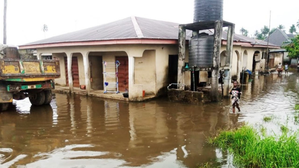Abuja, Oct 9 (IANS) The water levels in the River Niger, one of Nigeria’s two major rivers, are being put under control as part of measures to prevent imminent flooding in the most populous African nation.
Umar Mohammed, head of the Nigeria Hydrological Services Agency (NIHSA), on Tuesday, said in a statement that water levels in the River Niger Basin have been gradually receding since early this month, noting that the Jebba Dam is currently spilling excess water in coordination with operators of the Kainji Dam.
“The Kainji Dam has maintained a 53-centimetre buffer to manage any changes in water inflow,” Mohammed said, explaining these are necessary in keeping with flood preparedness protocols, Xinhua news agency reported.
He said that despite the rainy season gradually shifting southward, water is still entering Nigeria, as monitored by NIHSA. According to him, the hydrological agency will continue to work with national and international dam authorities to mitigate river flooding and support Nigeria’s socio-economic growth.
In late September, Nigerian authorities alerted citizens to the rising water levels in the country due to flash and river flooding. This followed prolonged rainfall across this West African country, causing devastating floods in several areas.
Water levels in the country’s two major rivers, the Benue and Niger rivers in the central part of Nigeria, and tributaries have “reached critical levels,” raising concerns about potential severe flooding in communities along these riverbanks, the NIHSA said in the earlier statement.
The hydrological agency predicted that 148 local government areas across 31 states, out of Nigeria’s total 36 states, are at high risk of flooding.
Over 1.08 million people had been impacted by the relentless rains in Nigeria, which led to widespread displacement, loss of lives, and destruction of homes and livelihoods, the United Nations Office for the Coordination of Humanitarian Affairs (OCHA) said in a report last month.
The floods had left at least 285 people dead, 641,598 people displaced, and 2,504 injured, the OCHA reported, adding houses, farmlands, and critical infrastructure had been devastated, with 98,242 homes affected.
–IANS
int/jk/rad




























